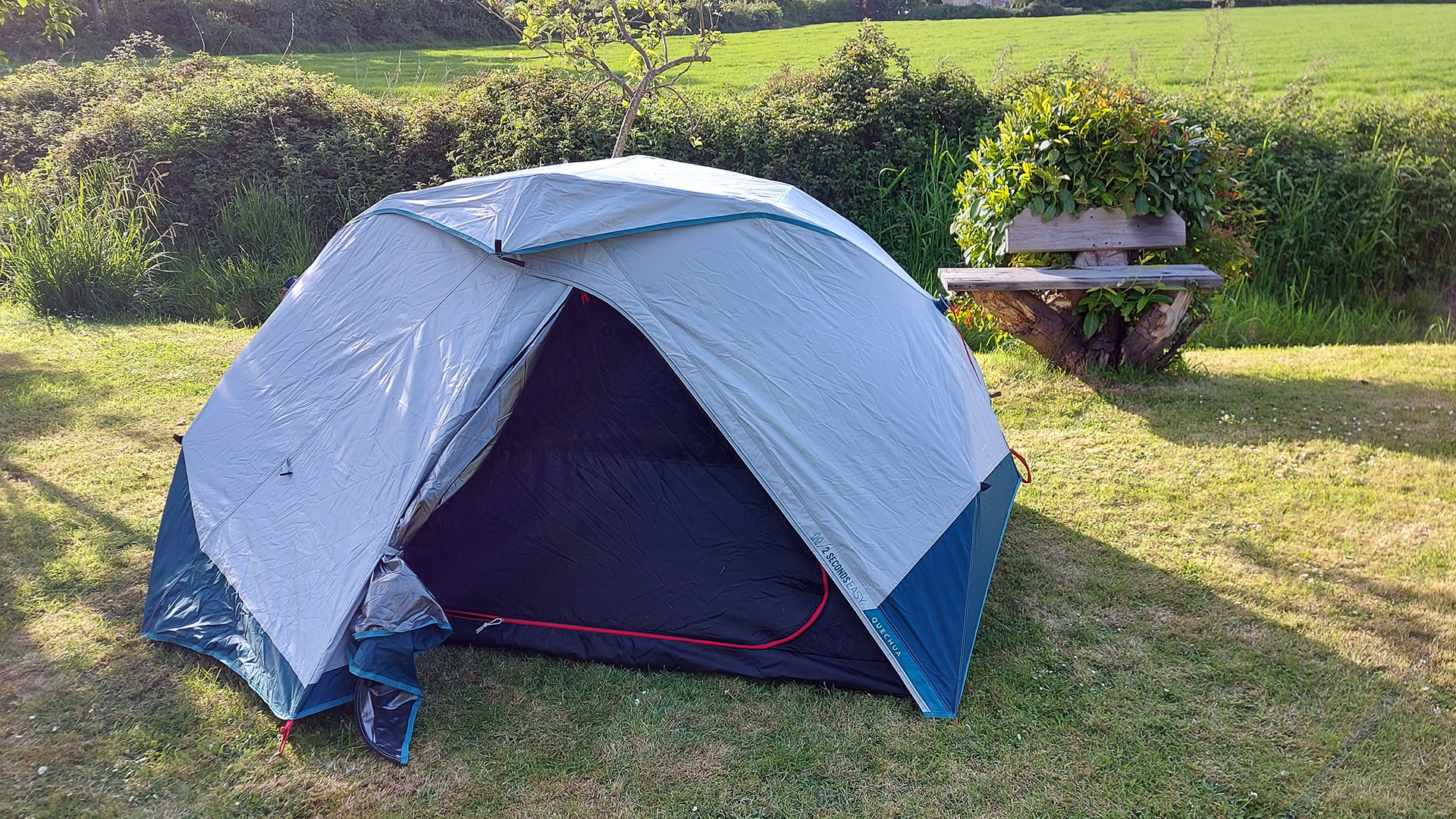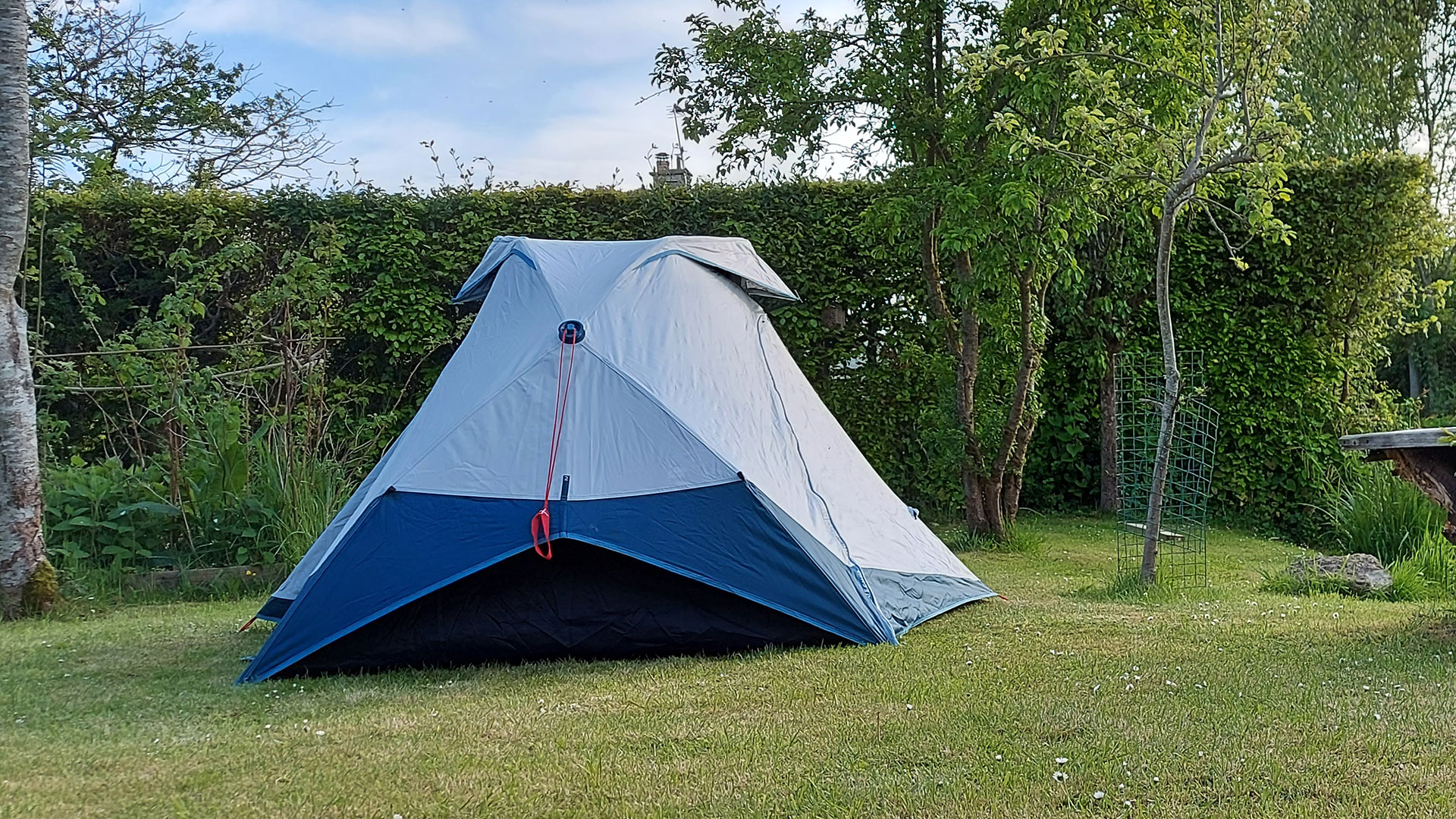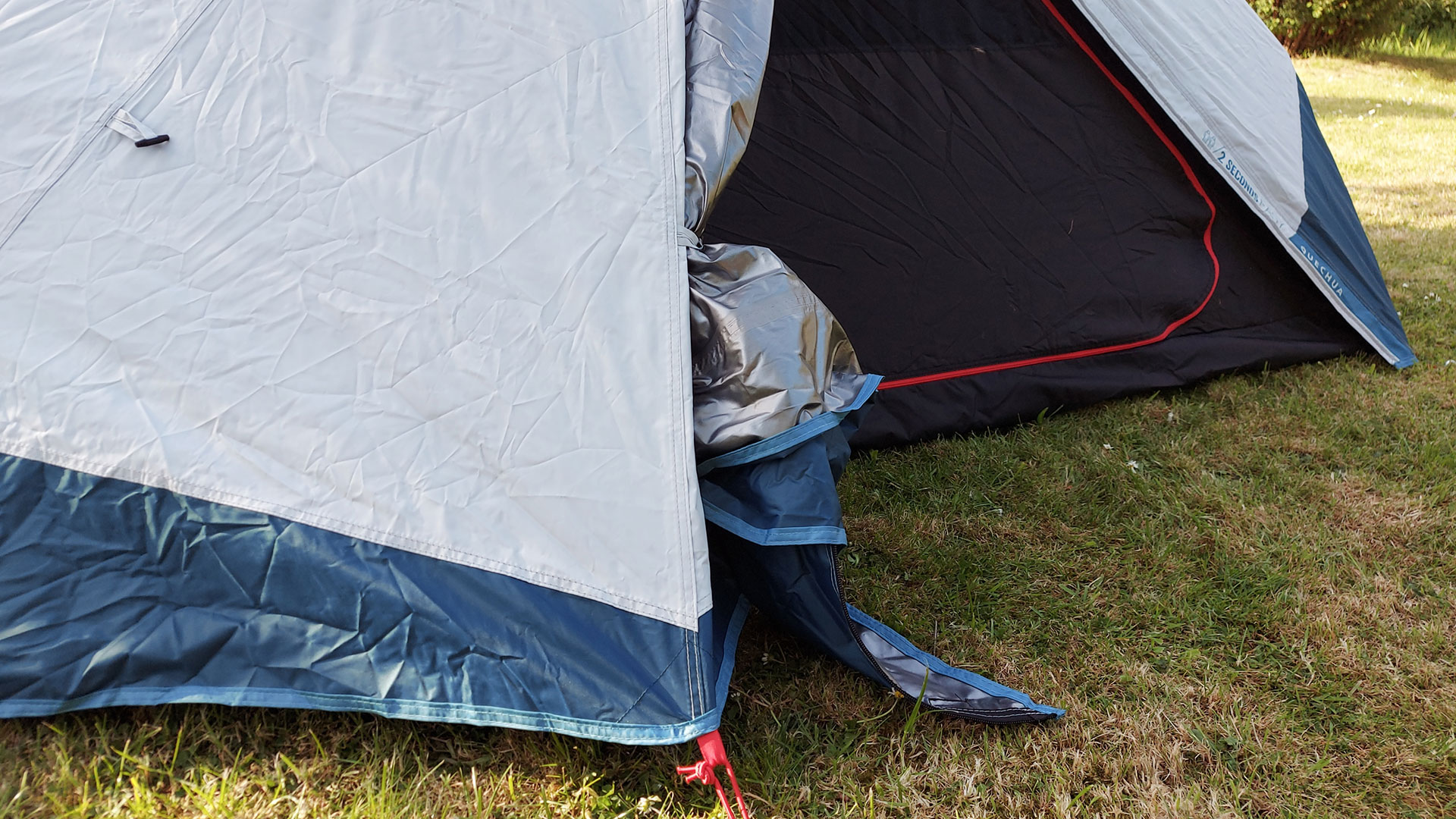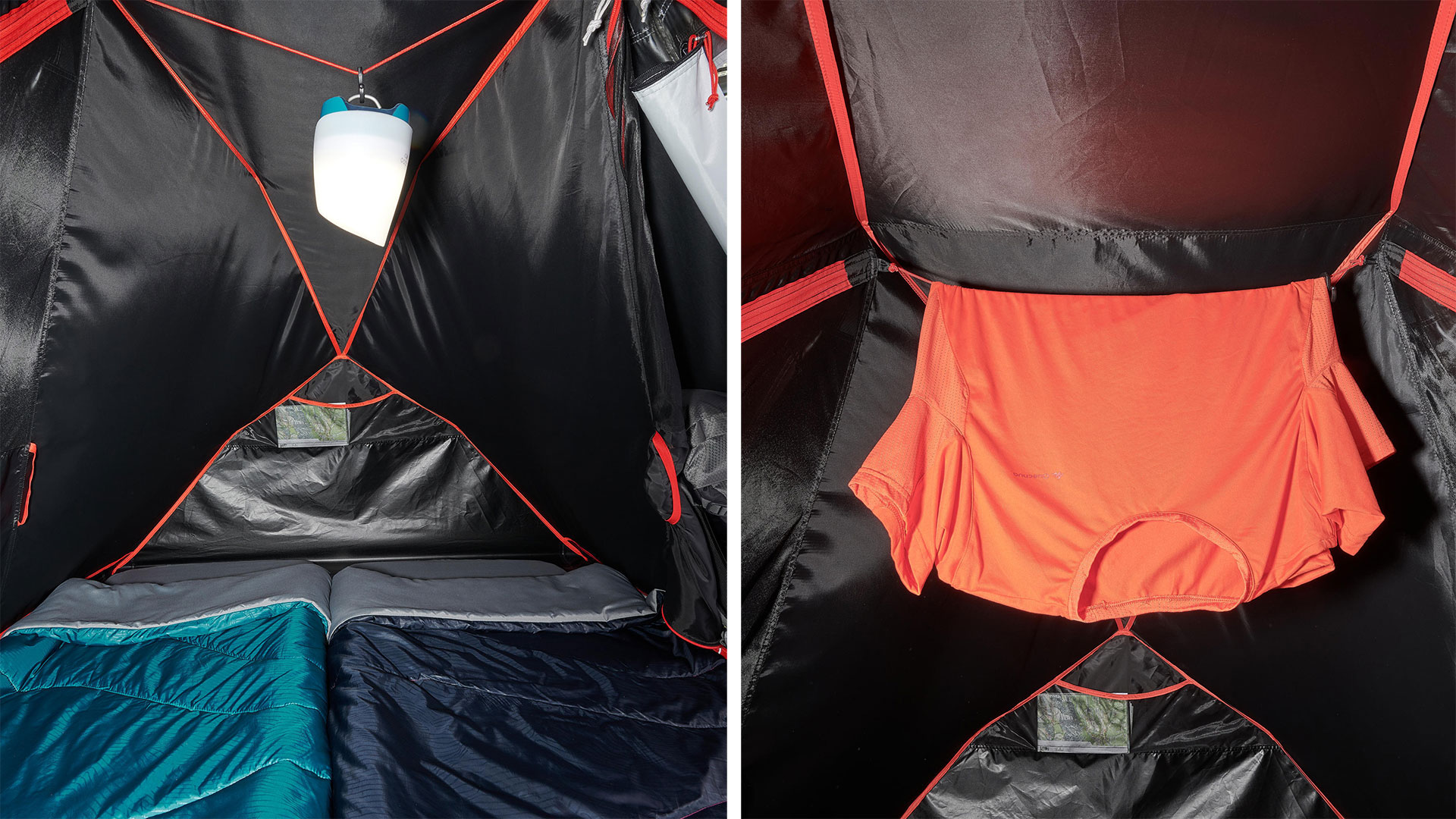Quechua Camping Tent 2 Seconds Easy - 2-Person - Fresh&Black review: Pop-up tents don't get much better than this
The Quechua 2-seconds easy Fresh & Black popup tent pings into place at the pull of a drawcord. Is it as faff-free as it sounds?


The Quechua 2 Seconds Easy Fresh & Black popup is incredibly easy to pitch and pack up, the design is functional and well thought-out (and includes that all-important blackout fabric), and it's extremely reasonably priced, too. Casual campers and festival-goers looking for a faff-free camping option should look no further.
-
+
Extremely easy to put up
-
+
Functional design and shape
-
+
Great value price
-
+
Effective blackout fabric
-
-
Not the lightest or smallest
-
-
A traditional structure might last longer
Why you can trust T3

The 'Quechua 2 Seconds Easy Fresh & Black Pop-Up tent (2-person)' doesn't exactly roll off the tongue. In fact, if the promises are to be believed, it'd probably take you longer to say the name than it would put this tent up. Coming from Decathlon's famously great-value Quechua range, the two-man version comes with an RRP of £119.99 and boasts an ultra-easy-pitch design and blackout fabric.
Based on specs alone, it should be one of the best popup tents around, as well as a contender for the best festival tent. So how does it perform in practice? I tested one out to see. Read on for my full – deep breath – Quechua 2 Seconds Easy Fresh & Black Pop-Up tent review.
Quechua 2 Seconds popup tent review: putting it up and down
Quechua 2 seconds pop up tent specs
Bedroom size: 145x205cm
Max. headroom: 110cm
Bag size: 59 x 20 x 20cm / 18.5L
Bag weight: 4.7kg
Wind proof: to 50km/h (Force 6)
Waterproof: Flysheet >2000mm / Groundsheet >5000mm
Main fabric: 100% polyester
Structure: 50% Polyoxymethylene, 50% fiberglass
The tent comes in a smart bag with a carry handle, into which there are hidden envelope pockets that hold pegs and guy ropes. There's also a flap showing you how to put the tent up. I applaud all of this, because the fewer separate parts there are, the lower the chance you'll forget something. The tent itself is tucked into a drawstring section within the carry bag, and it too is an all-in-one affair.
You start by pegging out the four corners. Then comes the fun bit: there are two red drawcords. Pull on each separately, until they click, and the two halves of the tent will take shape before your very eyes. The structure is kind of like two umbrellas, but what's going on inside, I couldn't tell you. At that point you're basically done, save for a couple of optional extras: you can add two more pegs to create the porch area either side of the sleeping compartment, and you can also add guy ropes to add stability to the structure it's an especially blustery day.
To put the tent down again, you press the same two knobs, then gather all the various poking up pole bits in to the centre, and roll the whole thing up. The first time you do it, you'll probably need to consult the instructions – which have been ultra-helpfully printed on the reverse of the putting-up instructions, attached to the carry bag – but even so, the process is far, far easier than the engineering nightmare that is wrangling a tradition popup tent back into its bag.
The flysheet, inner and groundsheet are all connected together for the ultimate in faff-free pitching, and the all-in-one design also means that you can put it up in the rain without getting your inner tent wet. Because its essentially a freestanding structure, you can also move it around when pitched if you need (do empty, it first, though).



It really is super, super quick, and super simple – definitely achievable with just one person. On that front, it easily outstrips any poled tent or even today's best inflatable tents. For popup purists, be aware that this tent does take longer to put up than the kind that literally springs into place. For that – let's be clear, absolutely minimal – extra effort to put the tent up, you get a much higher quality tent, and dodge the nightmare of getting it back into its carry bag when you're done with it, too.
Get all the latest news, reviews, deals and buying guides on gorgeous tech, home and active products from the T3 experts
I do have some queries over how sturdy the structure will prove to be over time. While I had no issues in my tests – as you'll discover later in this review – I'd still pick one of the traditional tent types (dome / tunnel / geodesic / semi-geodesic etc) if I was expecting really challenging camping weather conditions. The only other potential down-side that I can see is that a big red button that says 'Push' on it does rather invite people – children, drunken festival-goers – to push it.
Quechua 2 Seconds popup tent review: design and weatherproofing
For such a simple and reasonably priced tent, there are an impressive number of features. The main plus point is that it's two-layered, which means you avoid the condensation issues you'll encounter with single-layer popup tents. Here, you've got a flysheet and an inner, but they're attached, so you get all the benefits but none of the extra faff of getting them connected up, and disconnected when you need to leave.
The outside is made from a smart mix of teal coloured and very pale grey fabric. The latter is quite usual for a tent, and it turns out there's actually a story behind it. This 'greige' section is in its raw colour state, to lessen the environmental impact (turns out, dying fabric uses an awful lot of water). On the rest of the tent – the teal part of the flysheet and bedroom – is dyed using a 'Dope Dying process', which uses less water than traditional dye baths.

Another major boon is that it's made from blackout material. Quechua's patented FRESH & BLACK fabric, to be exact, which promises 99% darkness even in broad daylight. It's something that any summertime camper will tell you, is worth its weight in gold. Decathlon's version isn't quite as impressive as something like Coleman's Blackout fabric in terms of inky darkness, but still plenty effective enough to keep you snoozing through sunrise. I woke up with my alarm when I tested it, which is unheard of in a non-blackout option.
It also serves to regulate temperature within the tent. This one's harder to gauge the effectiveness of, but during my tests, it seemed to keep the warmth in very effectively overnight, and the tent didn't get too hot in the morning sunshine either.
In terms of the basics – i.e. weatherproofness – this tent performed with no issues. It has been tested on a rotating plate, and apparently will withstand winds of up to 50km/h (Force 6). One of the nights I slept in it the heavens opened, but I remained perfectly dry inside. The second night, in which I had left the tent out to dry, brought with it an actual, bona-fide thunderstorm. I wasn't inside, but the tent weathered the storm with no problems, even without guy ropes (for the record, I wouldn't recommend not using the guy ropes in a storm).
Quechua 2 Seconds popup tent review: interior
Inside, the sleeping compartment is big enough to comfortably fit two people, and tall enough to sit up in, too. There are three mesh pockets for stashing phones, keys and other valuables you might need easy access to. There's also a chord that runs across the inner top of the tent, with a hook for your camping lantern. Because of the usual design, the internal structure isn't quite as strong, so you wouldn't want to hang anything too heavy on this (Decathlon's photos suggest you could dry a T-shirt on it if you wanted).
There are large mesh panels in the door sections of the inner tent that allow for airflow through the bedroom, while keeping bugs out, as well as mechanical air vents at the top of the structure. The porches either side of the sleeping compartment are small, but perfect for stashing muddy footwear. On hot days, you could unpeg the porch bit and roll the whole door back to allow as much air as possible into the inner.

Quechua 2 Seconds popup tent review: other reviews and alternatives
While the Quechua performed well in the inclement weather I tested it out in, this is really a tent for casual campers rather than hardcore adventurers. If you fall into the latter camp, head to T3's best backpacking tent for some robust yet lightweight alternatives.
The reviews on the Decathlon website, the vast majority are overwhelmingly positive (at time of writing, an average of 4.5 /5 over 700+ reviews). The negative comments mostly centre around things breaking, and that's the potential down-side of the unusual structure, as well as the low price. Note that Decathlon does sell replacements for various bits of this tent, so you don't need to shell out for a whole new one if something wears out.
Quechua 2 Seconds popup tent review: verdict
The Quechua 2-seconds easy Fresh & Black popup tent is a one-way ticket to faff-free camping. The all-in-one design makes it really very difficult to lose things or go wrong, and pitching and putting down the tent is just about as simple as it could possibly be. You aren't sacrificing on comfort, either; the inside of the tent is very functional, with its effective blackout fabric, handy porches, mesh vent and camping lantern hook. While it proved very weatherproof in my tests, the popup design is probably not quite as robust as a traditional structure, and I wouldn't pick it for serious outdoor adventuring, but for casual campers and festival goers, it's a wallet-friendly winner.
Ruth was T3's Outdoors and Wellness Editor from 2020 to 2022, covering hiking, camping and adventure sports kit, as well as mattresses, sleep accessories, yoga and general wellness. She's now a Homes Editor at sister site TechRadar, where she deals in all things air (vacuum cleaners, robovacs, fans and air purifiers), and hair (hair dryers, straighteners and stylers).
